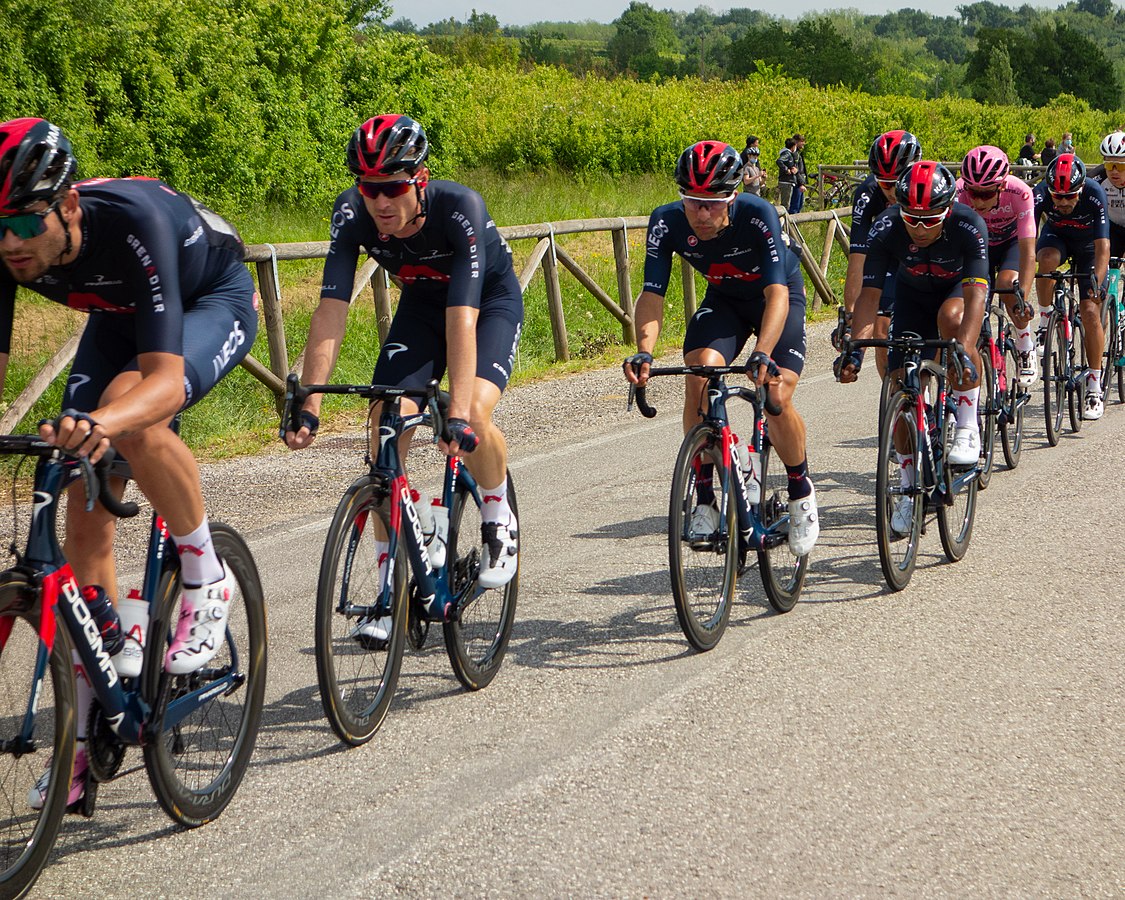Egan Bernal wins the Giro d’Italia
Egan Bernal (Ineos Grenadiers) returned to winning ways, taking victory in this year’s Giro d’Italia. The 24-year-old Colombian beat Italian Damiano Caruso (Bahrain Victorious) and British rider Simon Yates (Team BikeExchange) in the first of the three Grand Tours this year.
A cyclist for the British Ineos Grenadiers team – formerly known as Team Sky – and winner of the 2019 Tour de France, Bernal was considered a strong favourite for the Italian race, despite some questions regarding his form following a worse-than-expected 2020 season, where back problems forced him to resign early from the Tour.
Another British favourite, Hugh Carthy, looked strong in the first two weeks, but the third saw the 26-year-old EF Education-Nippo rider drop down to eighth.
This year’s race began in Turin and progressively headed south through Italy, before returning to the north to encounter challenging climbs in the Alps and finish with a time trial in Milan.
The first stages gave only a few opportunities for general classification favourites, with two mountain-top finishes in the Apennines – Sestola on stage four and San Giacomo on stage six – yielding small gaps, but indicating who would be in the mix when the real difficulties came. Stage nine, meanwhile, finished on a gravel road in Campo Felice, and saw Bernal power ahead of the other favourites to take stage victory and the pink jersey worn by the leader, a jersey he would not relinquish.
After the rest day, the riders faced a stage on the gravel roads of Tuscany, which saw Bernal attack on the final climb and build his lead further as he rode into Montalcino alongside Emmanuel Buchmann (Bora-hansgrohe) in the top two, and a few seconds before the other favourites – Caruso and Yates, as well as Carthy and Alexander Vlasov (Astana-Premier Tech). The biggest losers of the day were the two Deceuninck–Quick-Step favourites, Joao Almeida and Remco Evenepoel, with the Giro d’Italia marking a return to racing for the latter after a fractured pelvis triggered a nine-month pause.
It was in the Passo Giau climb that Bernal really consolidated his lead
Stage fourteen saw the return of the mightily steep Monte Zoncolan, where Bernal attacked yet again and grew his lead over Yates, who finished only a few seconds behind the Colombian. This time, it was Buchmann, Carthy, Bardet and Vlasov who suffered time losses. Buchmann ultimately crashed out the next day and suffered a mild concussion.
Stage sixteen was due to be an arduous effort through the Dolomites, including three challenging climbs. However, its route had to be changed after low temperatures and snow made the descents significantly more perilous, and only one climb was kept in the finale – the Passo Giau.
It was here, however, that Bernal really cemented his lead, attacking 25 kilometres before the end and arriving into Cortina d’Ampezzo 27 seconds before Bardet and Caruso, with the others recording far bigger losses. Yates in particular struggled in the cold and lost over two and a half minutes. By this point, Caruso was up in second place, whilst Carthy was third.
Fortunes completely changed after the rest day, on stage seventeen, ending in Sega di Ala. Almeida was the first rider to challenge, but it was Yates who put in a decisive dig and grew a lead, as Bernal visibly struggled and, at one point, almost stopped, running out of power, ultimately losing a minute. Yates faded too, but managed to climb onto the podium of the general classification, as Carthy, Vlasov and Bardet all dropped time on the steep final climb.
The last two road stages, leading to Alpe di Mera and Alpe Motta, saw victories for Yates and Caruso, respectively, while changes to the general classification this time were far more subtle. Carthy especially noted a significant deficit on the later day.
Everything finished with an individual time trial in Milan, which saw Bardet and Carthy fall in the classification after better results were noted by Almeida and Bernal’s team mate Daniel Martinez. However, the top three remained intact.
Yates’ podium was significant for the rider after previous near-misses
Both Caruso and Yates noted their first podiums at the Giro d’Italia, a matter of significance especially for the latter. 28-year-old Yates was a favourite in the last three editions of the race, but was always suddenly taken out of the fight. In 2018, he lost time on the road to Jafferau, in 2019 he cracked on the stage to Ceresole Reale, while in 2020 he was forced to withdraw after becoming infected with Covid-19. This year, had he not faltered on the stage to Cortina d’Ampezzo, the third week would have certainly marked a close battle for him for victory with Bernal.
Caruso’s podium, meanwhile, was one of the surprises of the race, for the Italian started off as a helper for Bahrain Victorious team leader Mikel Landa. However, the latter crashed and was forced to withdraw on stage four, as he fractured his collarbone and multiple ribs. 33-year-old Caruso then took control and was in the mix on all key stages, defending well against attacks from other riders to keep second place in his home race.
The Giro d’Italia is one of cycling’s three Grand Tours, the most prestigious races in the calendar, each lasting three weeks. The others are the Tour de France (26 June – 18 July), as well as the Vuelta a España (14 August – 5 September).

Comments